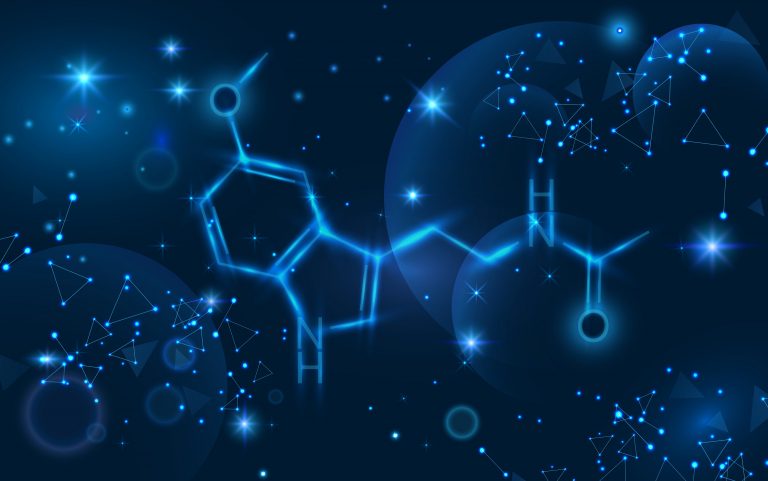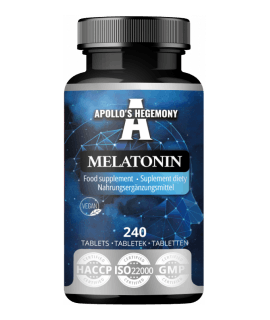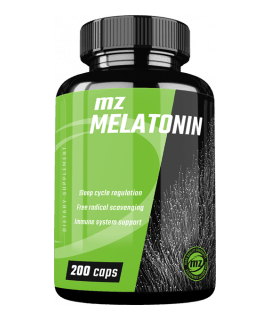The pineal gland is a unique organ in terms of both evenness (as one of the few organs of the human body occurs "alone"), and is located at the top of the head. In ancient times it was considered to be an element enabling man to contact the afterlife. Today we know that it plays a significant role in maintaining the homeostasis and well-being of every human. Its main task is to synthesize the hormone of sleep and darkness - melatonin.
What is melatonin?
Melatonin facilitates falling asleep and helps reduce negative mood when crossing time zones - the so-called jet-lag phenomenon. This hormone is produced from one of the amino acids supplied with food - tryptophan (food can also be a source of melatonin itself - good examples are rice, pistachios, grains of wheat, oats, and barley, as well as cherries, tomatoes, and cranberries). After it is consumed, melatonin is formed through four-step transformations.
The intermediate products are 5-HTP (5-hydroxytryptophan - also used in dietary supplements) and serotonin (responsible for good mood, reducing the risk of aggressive behavior, depression, and pain). The level of melatonin in humans determines sleepiness and is responsible for regulating diurnal rhythm. Disbalance in those hormones can lead to many ailments and diseases including, among others: overweight and obesity, hypertension, insulin resistance, and diabetes, and other chronic non-infectious diseases (also called civilization diseases).
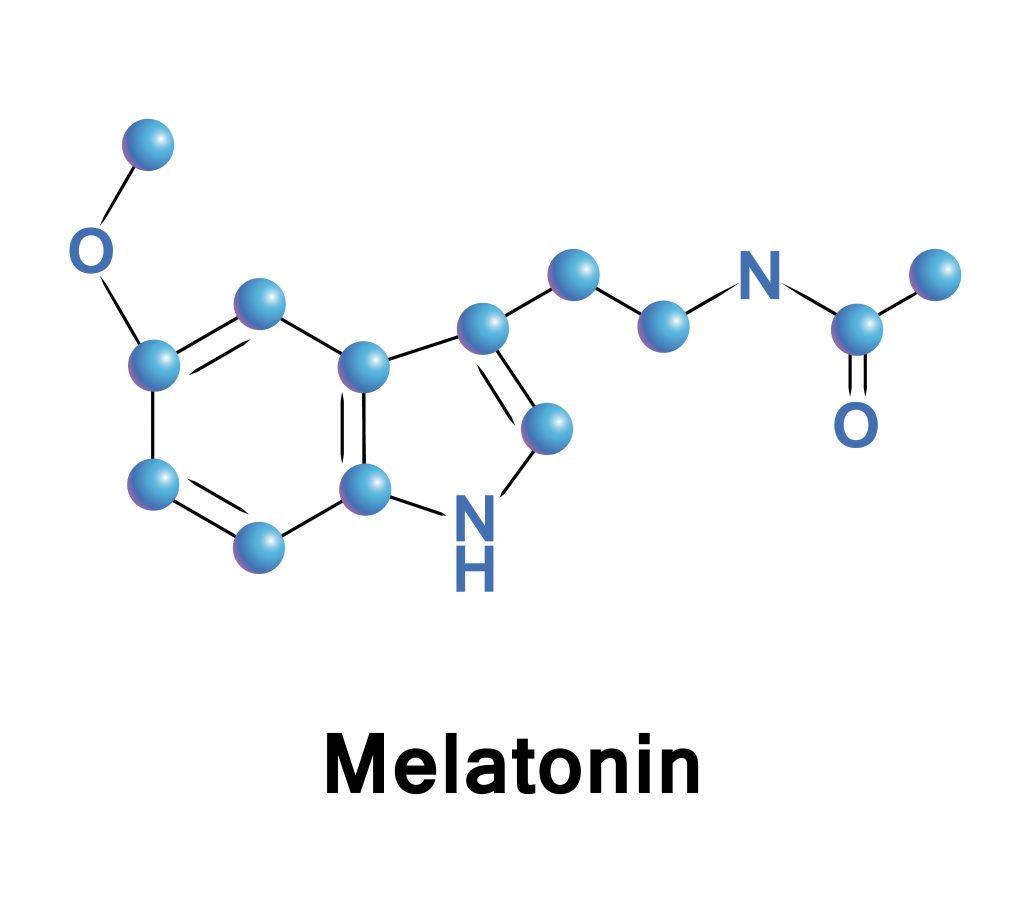
Melatonin and sleep disorders
Melatonin occurs naturally in our bodies. However, with age, its level decreases, which is often manifested by sleep disorders. In childhood, we have its highest level in serum (up to about 3 years of age) - 250 pg/ml. With the passing of years, the level gets lower and at adolescence, it is 120-180 pg/ml, and for adults, the values are from 65-80 pg/ml. Older people have the lowest level, it is only 20-30 pg/ml - which explains the lower amount of sleep of older people and frequent problems with falling asleep.
The level of melatonin is constant, fluctuations only occur at night during sleep because it is not secreted then.
In Norway between 2004 and 2011 melatonin was the most commonly used sleep medication in minors. In the table below I will present the most important recommendations.
| Problem? | Method | Author's tip |
| Night shift | 500 mcg-3 mg before bedtime (at home) | Sleep 6-7 hours per day and have an extra 30min nap time before the next night shift |
| Switch to a daytime shift | 3-5 mg before bedtime | Apply principles of sleep hygiene, especially limit light and arousing activities 3 hours before bedtime |
| Sleep disorders with other than 24-hours rhythm | 6-12 weeks - doses of 3-10mg, then reduce doses to 1-3mg | Use principles of sleep hygiene, especially limit light and arousing activities 3h before/after taking melatonin |
Inactive individuals, studies with melatonin are presented much less frequently, but results of studies with interventional uses are usually extrapolated from research protocols on healthy or sleep-disordered individuals, regardless of activity level
Dietary supplement with melatonin
Due to its effects, when taken in tablet or capsule form, melatonin is effective in reducing the time it takes to fall asleep and prolonging the duration of sleep. Studies on melatonin have proven its optimal effectiveness when taken 1-2 hours before bedtime. By taking the supplement, the body receives information from the central system that it should start to feel sleepiness. Melatonin itself does not have a sleep-inducing effect. It is important to remember that even a high dose of melatonin may be ineffective or show low effectiveness if you do not maintain proper sleep hygiene.
Melatonin in food
Melatonin isn't just in supplements and medications - it's also found in food, quite commonly, but in small amounts. Rice, cranberries, cherries, and tomatoes, as well as meat and eggs, are considered quite abundant sources of melatonin.
The substrate for the production of melatonin, tryptophan, is also found in food often, although usually in small concentration. Animal products are usually a better source of it. The average content (in 100g) according to the USDA list of selected products is:
- Pumpkin seeds - 570mg
- Mozzarella - 520mg
- Sesame, sunflower, ripened cheeses - 350-370mg
- Pork - 320mg
- Poultry, tuna - 300mg
- Oily fish - 200-300mg
- Chicken eggs, whole - 150mg
Bananas are often associated with improving sleep, which is supposedly due to their high tryptophan content. However, analyzing their composition, it's impossible to agree with this information - the content of this amino acid in bananas is drastically low, but due to their high content of carbohydrates (especially since they are quickly absorbed), they have the ability to increase the availability of tryptophan, and thus improve its uptake - ultimately improving sleep. Fruits with documented positive effects on sleep are cherries and kiwis.
Melatonin production in the body
The level of melatonin synthesis depends on many factors, the most important of which are:
- Age
- Lighting conditions in living place. Calcification of the pineal gland structures that occurs with age also has a significant effect. The level of melatonin synthesis decreases gradually after the age of 35-40.
- The level of light reaching the body (especially eyes)
- Time of day and year
Tryptophan availability, psycho-emotional state, physical activity, endocrine balance, and sleep hygiene are other aspects that have a significant impact on melatonin synthesis and secretion.
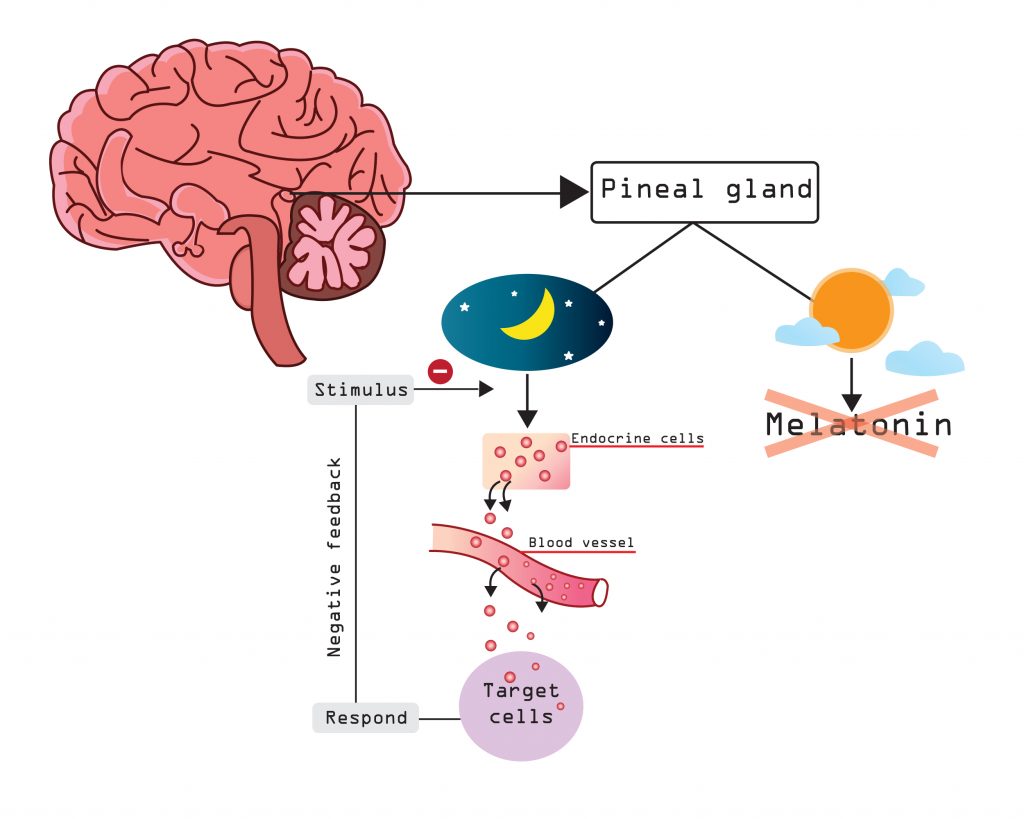
Melatonin catabolism
The pineal hormone is degraded in the liver, and the cytochrome P450 family of enzymes is responsible for its catabolism (most xenobiotics, including caffeine, are metabolized via these enzymes). In addition, part of melatonin (about 15-25%) is broken down under the influence of free radicals (in a non-enzymatic oxidation reaction) - it is a strong antioxidant, comparable or even stronger than vitamin C and glutathione.
Melatonin dosage
The dosage of melatonin is strongly dependent on individual needs. There are many preparations on the market with high doses of 5-10 mg, medium doses of 1-3 mg, and under 1mg (for microdosing of melatonin). For a person unfamiliar with the effects of melatonin on the body, it is recommended to use 1-3 mg for the first try, preferably on the day before a day off. Melatonin can cause drowsiness and feelings of brain fog, so it is worth testing it the night before your day off.
When to take melatonin?
Once daily in the evening (1-2 hours before bedtime).
Suggested doses of melatonin
1-5 mg
Melatonin - side effects and safety
The literature emphasizes the complete safety of pineal gland hormone intervention in the short term. Studies conducted on animals have documented the tolerance of huge doses, even used in pregnant females. At the same time, it should be noted that the use in people with impaired immune system functioning (due to immunomodulatory effect), e.g. suffering from allergies or autoimmune diseases, as well as in pregnant and lactating women (due to lack of an adequate number of studies) should not be recommended. Melatonin is metabolized via the cytochrome P450 family of enzymes in the liver, so other substances involving the same mechanisms (such as hypoglycemic agents, sleep aids, caffeine, or alcohol) may alter their effects when taken with it.
Melatonin is referred to as the "sleep and darkness hormone," but this is an understatement. Yes, it is produced in conditions of light deprivation, but its role is much more complex - it has a function in maintaining the proper functioning of most systems and contributes to the health and efficiency of the body. Its correct level not only enables us to sleep optimally but also improves the maintenance of proper blood pressure, glucose, and lipid levels in plasma, thanks to limiting the influence of free radicals it can also participate in minimizing the risk of developing inflammatory diseases.
We should take care to ensure conditions that allow for its synthesis, as well as to consume a sufficient amount of substrate for its production.
